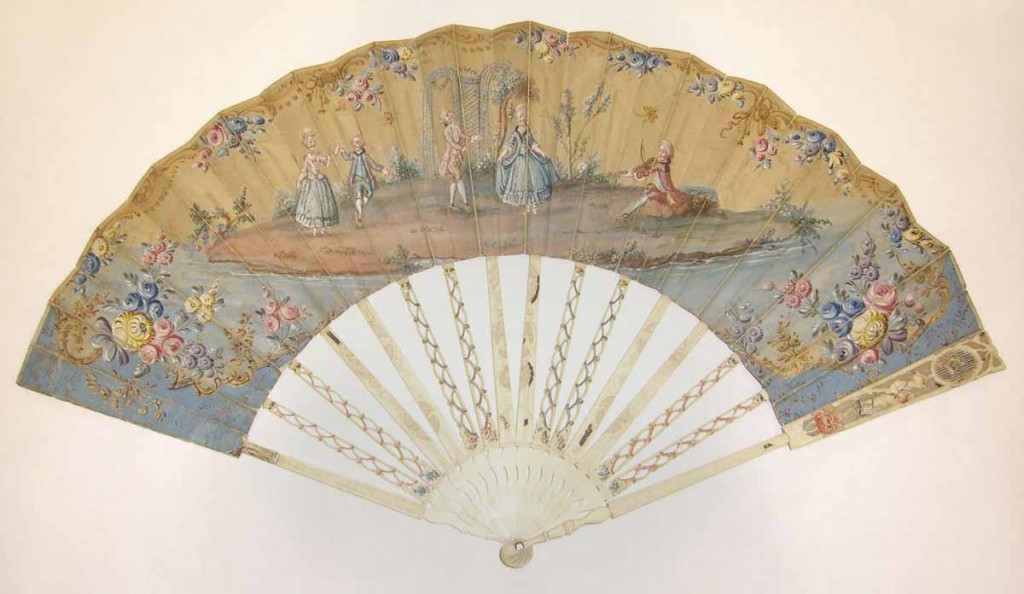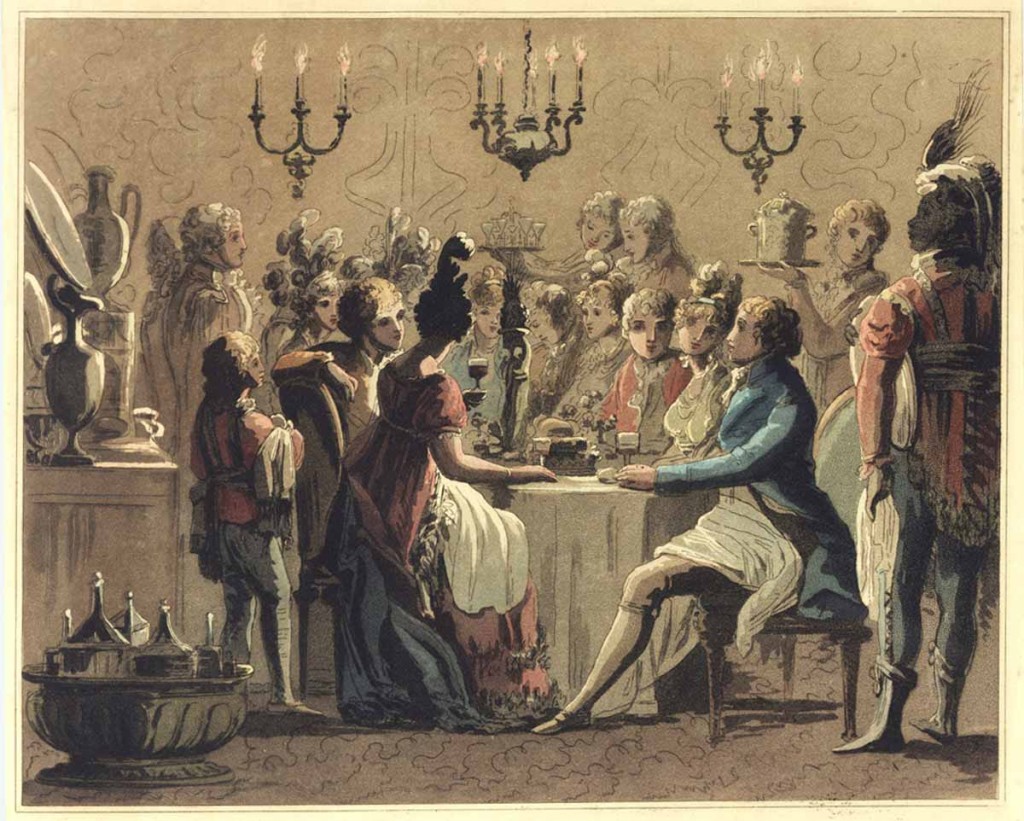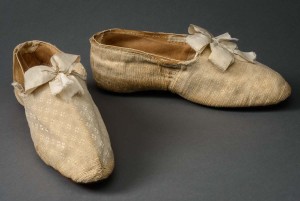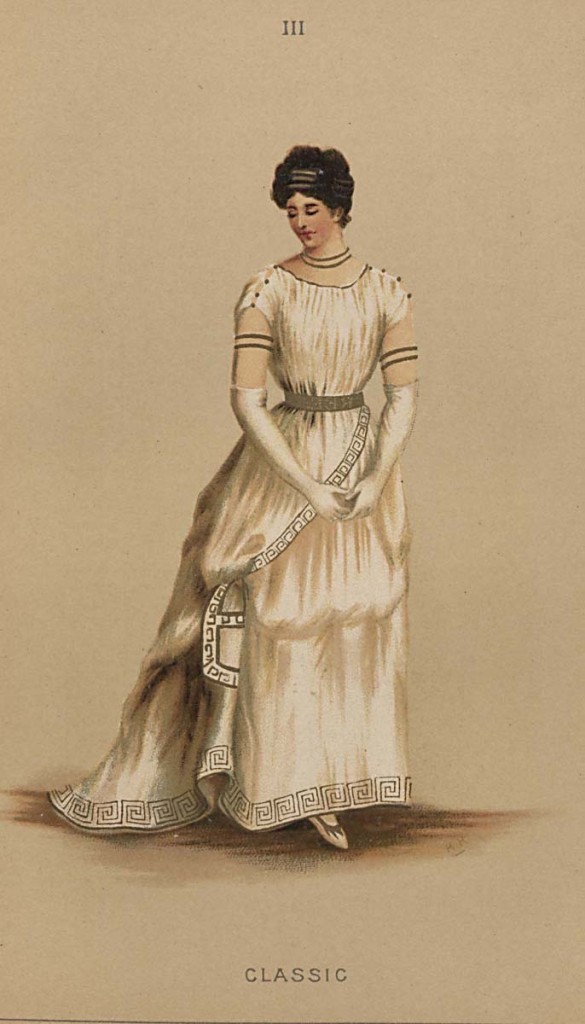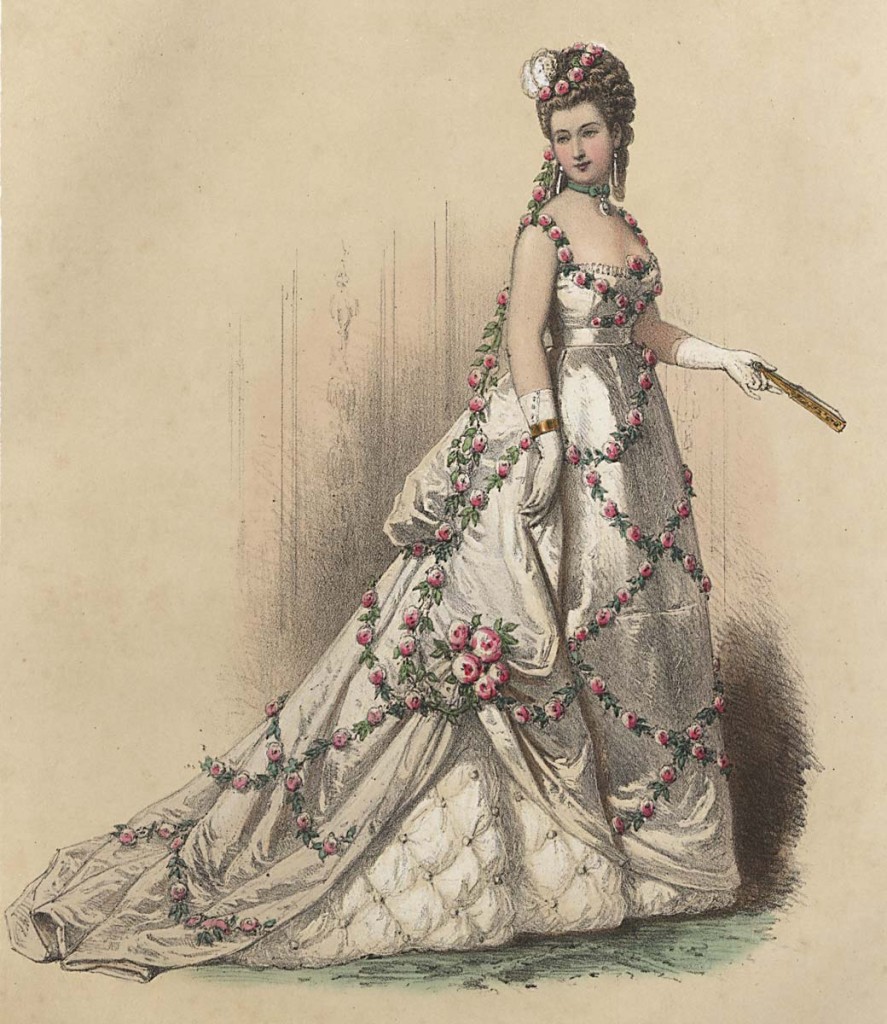Attire
In the 1700s and 1800s, wearing the proper attire and accessories for dances was as important as knowing the correct footwork. Fashions complemented dances as they both changed with the times. The ornate, voluminous costumes of the 1700s harmonizing with the slow, stately dances surrendered to lighter, leaner fashions of the 1800s allowing closer, faster movements.
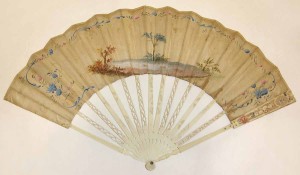 Fan
Fan
France; 1770-1800
Ivory, paper, watercolor
1961.1447 Bequest of Henry Francis du Pont
This gorgeously painted fan depicts two couples dancing outdoors to the music of a violin. Fans were not only fashionable and refreshing after an energetic dance, they also conveyed messages to partners later in the Victorian era. For example, a fan held open in a woman’s left hand meant she was eager to be approached while closed in the same hand indicated an engagement. If men were not well-versed in the language of fans, they could certainly interpret coquettish looks over them across crowded rooms.
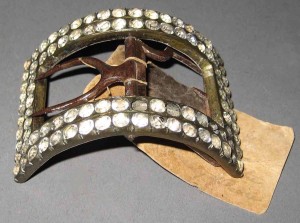 Shoe buckle
Shoe buckle
United States; 1780-90
Iron, brass, gem or rhinestones, copper
1958.102.16 Museum purchase
This bejeweled buckle adorned a shoe worn by Miss Mary Donaldson as she danced at the Ball of the Treaty of Paris. It is unknown whether the dance was held in honor of the 1783 Treaty of Paris (also referred to as the Treaty of Peace), which ended the American Revolution, or the 1787 Treaty of Peace and Friendship marking America’s formal relations with Morocco. The buckle was collected by historian and antiquarian John Fanning Watson of Philadelphia.
Supper at a Ball in a London Interior
Drawn by Maria Hadfield Cosway
London, England; 1803-05
Aquatint with ink and watercolor on wove paper
1989.57 Gift of Mrs. Gail C. Belden in memory of Elizabeth C. Krog
Notable in this drawing of dancers around a supper table are the two figures in the forefront: a woman in an Empire-waisted dress and a man in a cutaway coat. These slim silhouettes permitted faster turning in the round dances, which eclipsed the processional ones, in the early 1800s.
Slippers
United States; 1800-25
Leather, silk, linen, cotton
1968.179.1, .2 Gift of Mr. P. Fussell Cowan
Gloves
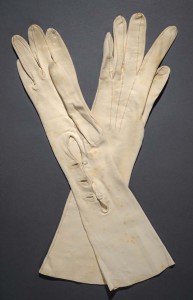 Made by Jouvin & Cie for Homer le Boutillier & Co. of Philadelphia
Made by Jouvin & Cie for Homer le Boutillier & Co. of Philadelphia
Paris, France; 1880-89
Kid leather, linen
2001.37.12a,g Gift of Patricia Newbold Forbes Dempsey
The discoloration and threadbare areas in these accessories exhibit expected wear and tear. Who knows how many times the shoes were stepped on by an enthusiastic if not skillful partner or the gloves tightly held in sweaty palms? Gloves at least protected a woman’s hands and added the perfect finishing touch to formal outfits. Ardern Holt in Fancy Dresses Described or What to Wear at Balls proclaimed a woman found it “uncomfortable” to dance without gloves.
Fancy Dresses Described or What to Wear at Balls
Ardern Holt
London, England: Debenham & Freebody, about 1887
GT1750 H75 Printed Book and Periodical Collection, Winterthur Library
Les Modes de Paris
Paris, France; about 1870-1875
54-B-2-2 John and Carolyn Grossman Collection, Winterthur Library
The latest fashions from England and France were still sought after by Americans in the late 1800s. Costume balls were especially popular in Gilded Age circles, and a Classical gown decorated with a Greek key pattern with Russian gold braid was “suited to a young girl of slender figure.” The French plate shows a woman ready for a ball wearing gloves, fan, jewelry, and hair ornaments.
Geraldine’s Scrapbook of Dresses
Compiled by Ella C. Jenkins Brown
Newton, Massachusetts; 1889-1904
04×21 Joseph Downs Collection of Manuscripts and Printed Ephemera, Winterthur Library
An accomplished seamstress, Ella Brown proudly kept fabric swatches, pictures and notes about the dresses she designed for her daughter Geraldine over a 10 year period in this charming scrapbook. For eleven year old Geraldine’s first time at Ted’s dancing school, she wore a blue and pink dress with a tucked yoke, crush bill and collar, and silk-ruffled sleeve caps.


